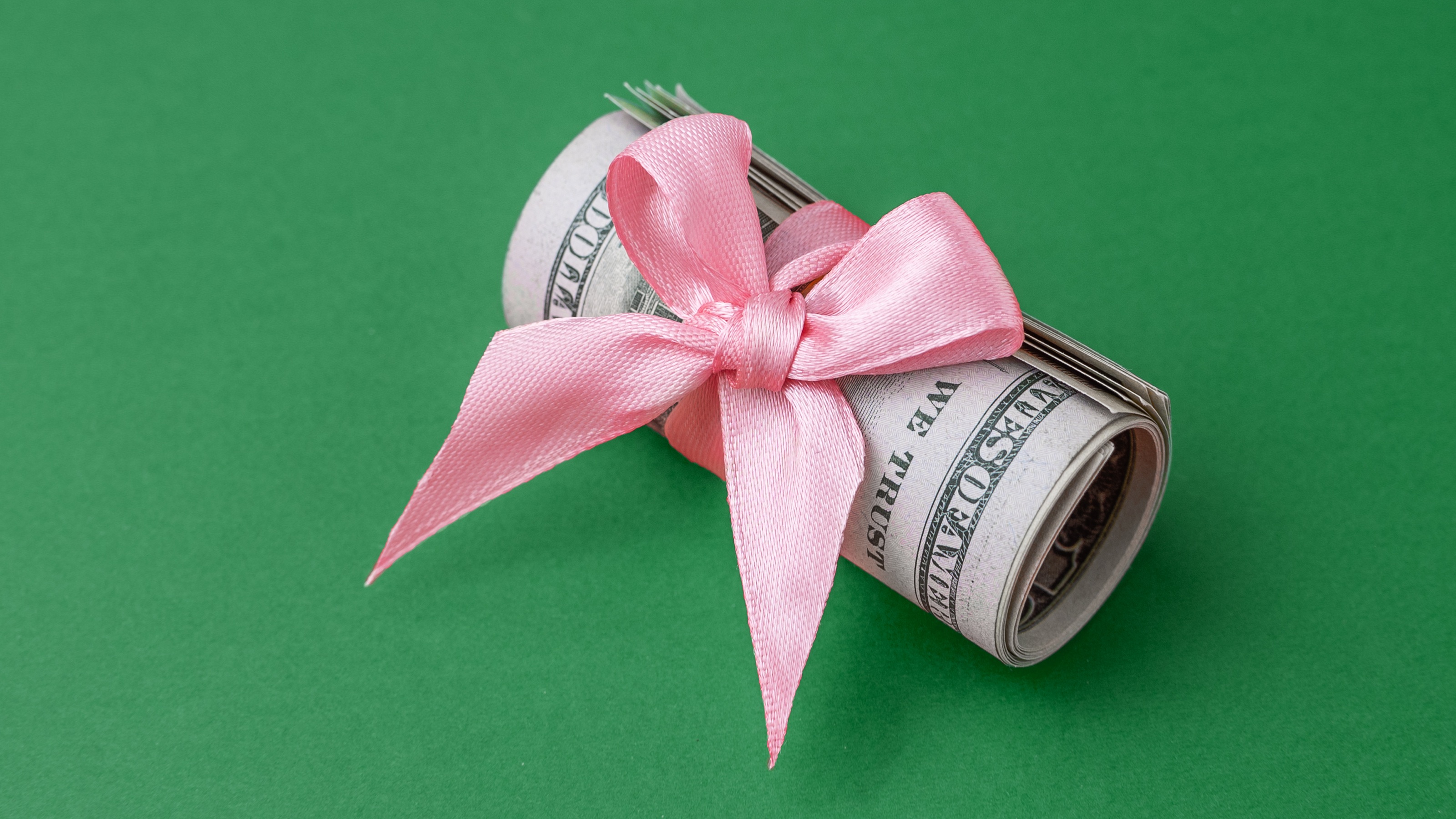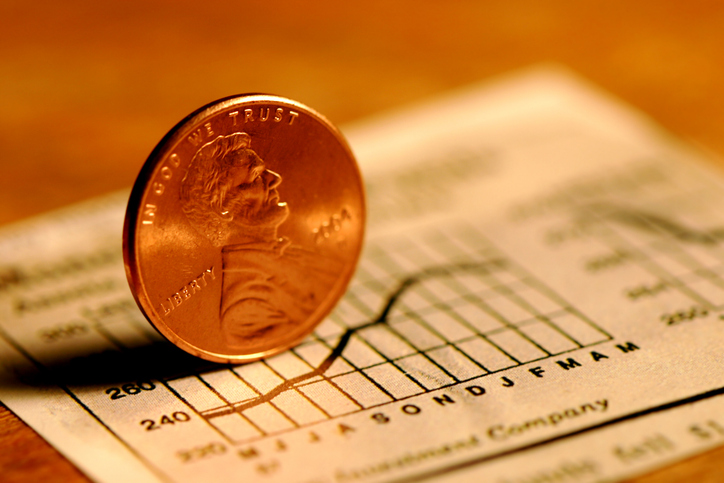The Best Financial Stocks to Buy
Financial stocks play a critical role in the economy and are a key component of any well-rounded portfolio.


Investors have many reasons to seek out the best financial stocks.
You see, every year, untold trillions of dollars flow through the financial sector – banks, insurers, payment processors, brokers and other financial services providers.
These firms act as the arteries of the global economy, and they play a part in the everyday lives of billions of people.
From just $107.88 $24.99 for Kiplinger Personal Finance
Become a smarter, better informed investor. Subscribe from just $107.88 $24.99, plus get up to 4 Special Issues

Sign up for Kiplinger’s Free Newsletters
Profit and prosper with the best of expert advice on investing, taxes, retirement, personal finance and more - straight to your e-mail.
Profit and prosper with the best of expert advice - straight to your e-mail.
Today, we'll take a closer gander at the financial sector, including how it's defined, why investors seek exposure to it, and how we find the best financial stocks to buy.
Company (ticker) | Long-term EPS growth rate | Return on equity | Average analyst rating | Dividend yield |
MetLife (MET) | 13.1% | 15.4% | 1.0 | 2.8% |
Blackstone (BX) | 22.9 | 34.1 | 2.0 | 2.6 |
The Carlyle Group (CG) | 11.5 | 20.4 | 2.0 | 2.6 |
Voya Financial (VOYA) | 13.3 | 12.4 | 1.0 | 2.5 |
Equitable Holdings (EQH) | 13.3 | 175.7 | 1.0 | 1.9 |
Progressive (PGR) | 13.6 | 34.3 | 2.0 | 1.9 |
Western Alliance Bancorp (WAL) | 11.3 | 12.7 | 2.0 | 1.8 |
What are financial stocks?
Generally speaking, financial stocks represent companies whose primary businesses involve providing financial services, such as banking, brokerage services and insurance.
For a more complete answer, we'll look to the Global Industry Classification Standard – a framework used by major index providers to help classify public companies.
According to the GICS, the financial sector "contains companies engaged in banking, financial services, consumer finance, capital markets and insurance activities. It also includes financial exchanges & data and mortgage REITs."
That last industry is mortgage real estate investment trusts, an asset class represented in the best REITs to buy.
Why do investors buy financial stocks?
Financial stocks are something of an oddball in that they provide services that most people need – savings, checking, credit card processing, auto and mortgage lending – so they can look and feel like consumer staples stocks.
But the truth is so much more complicated.
In reality, many financial stocks are quite cyclical, waxing and waning with the broader economy.
Recessions tend to reduce economic activity, and the typically concurrent rise in unemployment tends to set many consumers back in repayments, sometimes to the point of default.
Financial stocks can also be heavily affected by changes in interest rates; rising rates allow banks to charge more on lending products, for instance.
But they can also depress demand for auto loans, mortgages and other products.
That sounds fairly complicated. So … why buy financial stocks?
"Financials make up a significant portion of overall GDP and are extremely important in ensuring the economy functions efficiently," write Edward Jones analysts James Shanahan and Kyle Sanders in a February 2024 note.
"Playing such an integral role in the lives of consumers, businesses and institutions," Shanahan and Sanders add, "we believe financial services companies should be a key component to an investor's portfolio."
But investors would be wise to consider a variety of financial stocks, just given how different the business models, and even the stocks' value propositions, are from one financial industry to the next.
For instance, mega-banks are well capitalized and have a diverse line of revenue streams, providing some level of safety (and often decent dividends).
Financial technology companies are a source of growth as younger generations eschew traditional banking models for online banks, payment apps, and the like.
Insurance stocks provide relative stability and income and are one of the most direct ways to leverage rising interest rates.
How to find the best financial stocks to buy
Given the variety of reasons you might invest in the sector, we're not going to assume we know exactly what you want out of a financial stock.
But we can help you start your search for the best stocks to buy with a basic quality screen.
To get to the following list of financial stocks, we've looked for companies:
Within the S&P Composite 1500: This index is a combination of the S&P 500, S&P MidCap 400, and S&P SmallCap 600.
This screen allows for stocks of different sizes, but it still represents roughly 90% of America's market capitalization, weeding out the smallest stocks.
With a long-term estimated earnings-per-share growth rate of at least 10%: Financial stocks are cyclical in nature, so you can't realistically expect high growth all the time.
But a long-term EPS growth expectation of 10% or more, that considers the possibility of that cyclicality, is a good baseline of potential.
Just remember: Expectations don't guarantee results.
With a trailing-12-month return on equity of at least 10%: Return on equity (RoE) is a good way to gauge how well a bank or other financial company generates income from shareholder capital.
Generally speaking, 10% is a good benchmark for RoE.
Anything above 10% is passable, though 15% to 20% is considered good.
With at least 10 covering analysts: We'd like to look at stocks that are on Wall Street analysts' radar, which makes it likelier that there's both more reporting and more insights on these companies.
The more research we have at our disposal, the more educated a decision we can make.
With a consensus Buy rating: All of the stocks must have an average broker recommendation of 2.5 or less within S&P Global Market Intelligence's ratings scale.
S&P Global Market Intelligence converts analysts ratings into a numerical scale. Anything with a score of 2.5 or less is considered a Buy.
With a dividend yield of at least 1.5%: Financials tend to be in the middle of the S&P 500's 11 sectors in terms of yield.
Dividends can be significant in certain industries, low or nonexistent in others.
Here, we're looking for at least a modest amount of income, so we've set the bar at 1.5%. This is just above the S&P 500's current dividend yield of 1.3%
Related content
Profit and prosper with the best of Kiplinger's advice on investing, taxes, retirement, personal finance and much more. Delivered daily. Enter your email in the box and click Sign Me Up.
Kyle Woodley is the Editor-in-Chief of WealthUp, a site dedicated to improving the personal finances and financial literacy of people of all ages. He also writes the weekly The Weekend Tea newsletter, which covers both news and analysis about spending, saving, investing, the economy and more.
Kyle was previously the Senior Investing Editor for Kiplinger.com, and the Managing Editor for InvestorPlace.com before that. His work has appeared in several outlets, including Yahoo! Finance, MSN Money, Barchart, The Globe & Mail and the Nasdaq. He also has appeared as a guest on Fox Business Network and Money Radio, among other shows and podcasts, and he has been quoted in several outlets, including MarketWatch, Vice and Univision. He is a proud graduate of The Ohio State University, where he earned a BA in journalism.
You can check out his thoughts on the markets (and more) at @KyleWoodley.
-
 I'm want to give my 3 grandkids $5K each for Christmas.
I'm want to give my 3 grandkids $5K each for Christmas.You're comfortably retired and want to give your grandkids a big Christmas check, but their parents are worried they might spend it all. We ask the pros for help.
-
 If You're Not Doing Roth Conversions, You Need to Read This
If You're Not Doing Roth Conversions, You Need to Read ThisRoth conversions and other Roth strategies can be complex, but don't dismiss these tax planning tools outright. They could really work for you and your heirs.
-
 Could Traditional Retirement Expectations Be Killing Us?
Could Traditional Retirement Expectations Be Killing Us?A retirement psychologist makes the case: A fulfilling retirement begins with a blueprint for living, rather than simply the accumulation of a large nest egg.
-
 I'm a Financial Planner: If You're Not Doing Roth Conversions, You Need to Read This
I'm a Financial Planner: If You're Not Doing Roth Conversions, You Need to Read ThisRoth conversions and other Roth strategies can be complex, but don't dismiss these tax planning tools outright. They could really work for you and your heirs.
-
 Could Traditional Retirement Expectations Be Killing Us? A Retirement Psychologist Makes the Case
Could Traditional Retirement Expectations Be Killing Us? A Retirement Psychologist Makes the CaseA retirement psychologist makes the case: A fulfilling retirement begins with a blueprint for living, rather than simply the accumulation of a large nest egg.
-
 I'm a Financial Adviser: This Is How You Can Adapt to Social Security Uncertainty
I'm a Financial Adviser: This Is How You Can Adapt to Social Security UncertaintyRather than letting the unknowns make you anxious, focus on building a flexible income strategy that can adapt to possible future Social Security changes.
-
 I'm a Financial Planner for Millionaires: Here's How to Give Your Kids Cash Gifts Without Triggering IRS Paperwork
I'm a Financial Planner for Millionaires: Here's How to Give Your Kids Cash Gifts Without Triggering IRS PaperworkMost people can gift large sums without paying tax or filing a return, especially by structuring gifts across two tax years or splitting gifts with a spouse.
-
 'Boomer Candy' Investments Might Seem Sweet, But They Can Have a Sour Aftertaste
'Boomer Candy' Investments Might Seem Sweet, But They Can Have a Sour AftertasteProducts such as index annuities, structured notes and buffered ETFs might seem appealing, but sometimes they can rob you of flexibility and trap your capital.
-
 AI Stocks Lead Nasdaq's 398-Point Nosedive: Stock Market Today
AI Stocks Lead Nasdaq's 398-Point Nosedive: Stock Market TodayThe major stock market indexes do not yet reflect the bullish tendencies of sector rotation and broadening participation.
-
 Got $100 to Gamble? These Penny Stocks Could Be Worth the Ride
Got $100 to Gamble? These Penny Stocks Could Be Worth the RideVolatile penny stocks are high-risk plays with potentially high rewards. If you have $100 you can afford to lose, these three names are worth a look.
-
 Quick Question: Are You Planning for a 20-Year Retirement or a 30-Year Retirement?
Quick Question: Are You Planning for a 20-Year Retirement or a 30-Year Retirement?You probably should be planning for a much longer retirement than you are. To avoid running out of retirement savings, you really need to make a plan.
